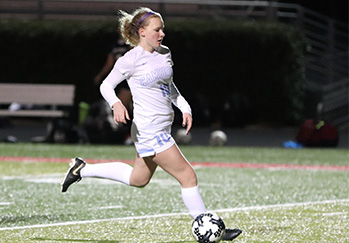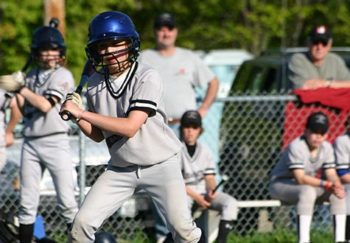
I admit it. I was one of those parents.
My daughter was going to be the one to get a full ride playing soccer for a Division 1 school. She might even compete on a national stage (2023 World Cup, here we come). Fueled by coaches’ praise, sideline chatter and a hefty dose of mom pride, I confess I got a little, um, caught up.
All humility aside, the truth is my girl can dominate on the pitch. And she truly loves the sport. So much so that she never wanted to play anything else. Why would she want to be a bench warmer in basketball when she can stand out on the soccer field, she said.
That’s why year after year, starting at age eight, I gave in to my daughter’s pleas for more playing time. I followed her coaches’ recommendations to seek out the next challenge so she could remain competitive among her peers. Soon the fall club season was followed by a winter indoor league, which ran right into spring club ball and then a summer elite league.
We weren’t alone. Most of my daughter’s teammates were following the same roadmap, playing one sport year-round.
Risks of Early Sports Specialization
The problem, of course, is that we now know that allowing kids to focus solely on one sport — especially when there’s no off-season — puts them at greater risk for injury.
With sports like soccer and football, the risk of contact injuries like fractures or concussions increase the more often a child plays. For baseball, tennis, running and other sports that require repetitive motion, kids are more likely to experience overuse injuries.
According to a 2013 study, adolescents who spend more hours per week than their age playing one sport are 70% more likely to experience overuse injuries. So an eight-year-old, for example, should practice one sport no more than eight hours per week to reduce her risk for injury.
“Kids’ skeletons and muscle groups aren’t mature yet,” says orthopedic surgeon Winston Gwathmey, MD. “Plus, their mechanics and techniques aren’t well developed, so they may be putting additional stress on the same parts of their body again and again without an opportunity to rest or heal. That’s when they get in trouble with injuries.”
In some cases, overuse injuries can have lasting consequences, adds Gwathmey. “Kids’ bodies can break down and they can have an injury with long-term effects that end up ruining collegiate aspirations,” he says. “For example, in baseball, pitchers may have an accumulation of damage to shoulder or elbow that can negatively affect performance.”
Tips to Avoid Overuse Injuries
The best way to avoid overuse injury: diversify. Kids should participate in a variety of sports during the year that engage different muscle groups. If your son plays baseball in the spring, then soccer or cross-country running in the fall may be a good option because he’ll be giving those upper extremities a break.
Of course, if your kid is stubborn like mine and refuses to play anything but her number one sport, then you’ll need a plan B to help keep her healthy and injury-free. For all young athletes, Gwathmey recommends conscientious year-round conditioning, which includes:
Cross training
Establish a weekly regimen of a variety of exercises to work different muscle groups and improve endurance and flexibility, such as bicycling, swimming and yoga. Weight training may be incorporated into the regimen. But don’t overdo it because too much bulk can strain the growing skeleton, says Gwathmey.
Stretching
Incorporate dynamic stretching (active movements that encourage full range of motion) into a warm-up. Do static stretches (holding positions that extend the muscle) after training to loosen up muscles and joints and prevent injury.
Eating right
Fuel the body with a healthy mix of:
- Protein to build muscle
- Calcium and vitamin D to promote bone health
- Plenty of calories to maintain a healthy body weight and keep metabolism in check.
Rest
Take a break during the week to allow the body to heal. Better yet, take a season off from time to time.
Early Sports Specialization May Not Lead to Future Success
Kids who are serious about playing sports at the next level are likely to listen to this advice, according to Gwathmey. “I think if we educate kids and their families about the risks of early sports specialization and the importance of diversification, cross-training, proper nutrition and rest, then we can break through and they’ll be smarter about how they participate in sports.”
Is Your Child Ready to Get Back in the Game?
Schedule a sports physical today.
Part of this education is making sure athletes and their parents are realistic about the chances of playing at the next level. Only a small percentage of high school athletes will play a varsity sport in college. Gwathmey reminds me that kids who make the cut are going to be the healthy ones who can actually perform.
This soccer mom gets that message loud and clear. My daughter is now a junior in high school and is just beginning the college recruitment process. She still has a full soccer schedule, but she has embraced her summers off, she eats right, and she humors me now and then and joins me for yoga. College soccer may be in her future, but maybe not. And that’s ok. She’s healthy and happy and it’s been a joy to see her play and excel in a sport she loves.

